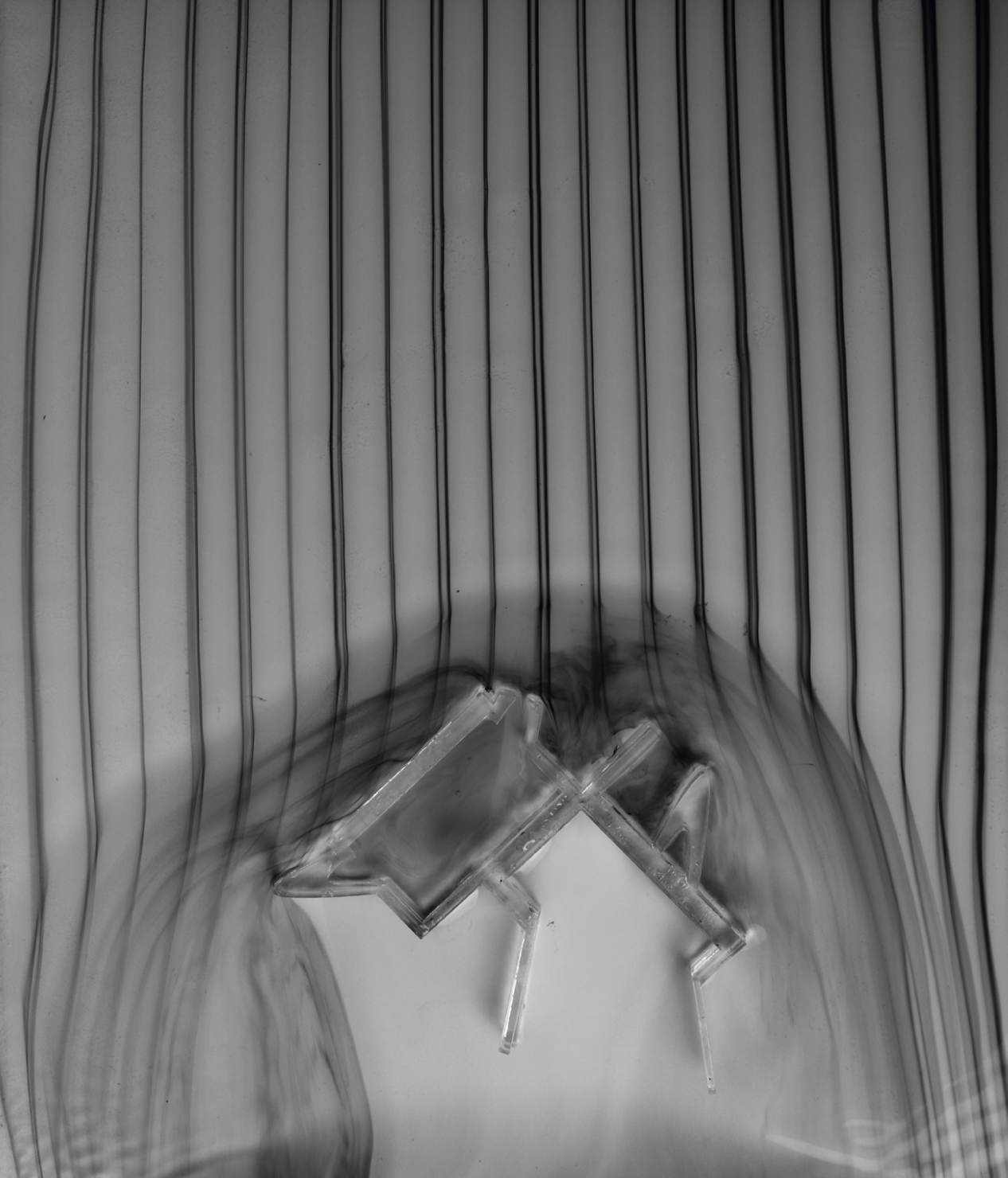Dr Disrupting Scientific Flow Visualization Protocols: Photographing Architecture’s Atmospheres
Main Article Content
Abstract
This paper explores the intermedial dialogues between my environmental model prototypes— of wind tunnels, water tables, and filling boxes —and photographs of them. I speculate about how photo- graphs of my models make comprehensible some of the seemingly incomprehensible scales and material complexities associated with atmospheric constructions underpinning the climate crisis. I illustrate how environmental models can be read at several scales: the one-to-one scale of the instrument as a tectonic artefact; the scale set by the architectural model on the testing bed; and the ambiguous scale of the controlled space of air and water flow. Each scale offers new vantage points for thinking about architecture’s many atmospheric dialogues between inhabitants, buildings, instruments, architectural models, and the wider world we are immersed within. Photography aids in the readings across scales, enabling design insights not possible outside of the mediating lens of the camera. Fundamentally, I suggest that the intermedial dialogues between source model and abstracted photograph merge two conceptions of ‘the atmosphere’ by first following and then disrupting the protocols of scientific flow visualization.
Image: Detail photograph of flow visualization in water table prototype 3. © Lisa Moffitt, 2018.
Article Details

This work is licensed under a Creative Commons Attribution-NonCommercial-NoDerivatives 4.0 International License.

